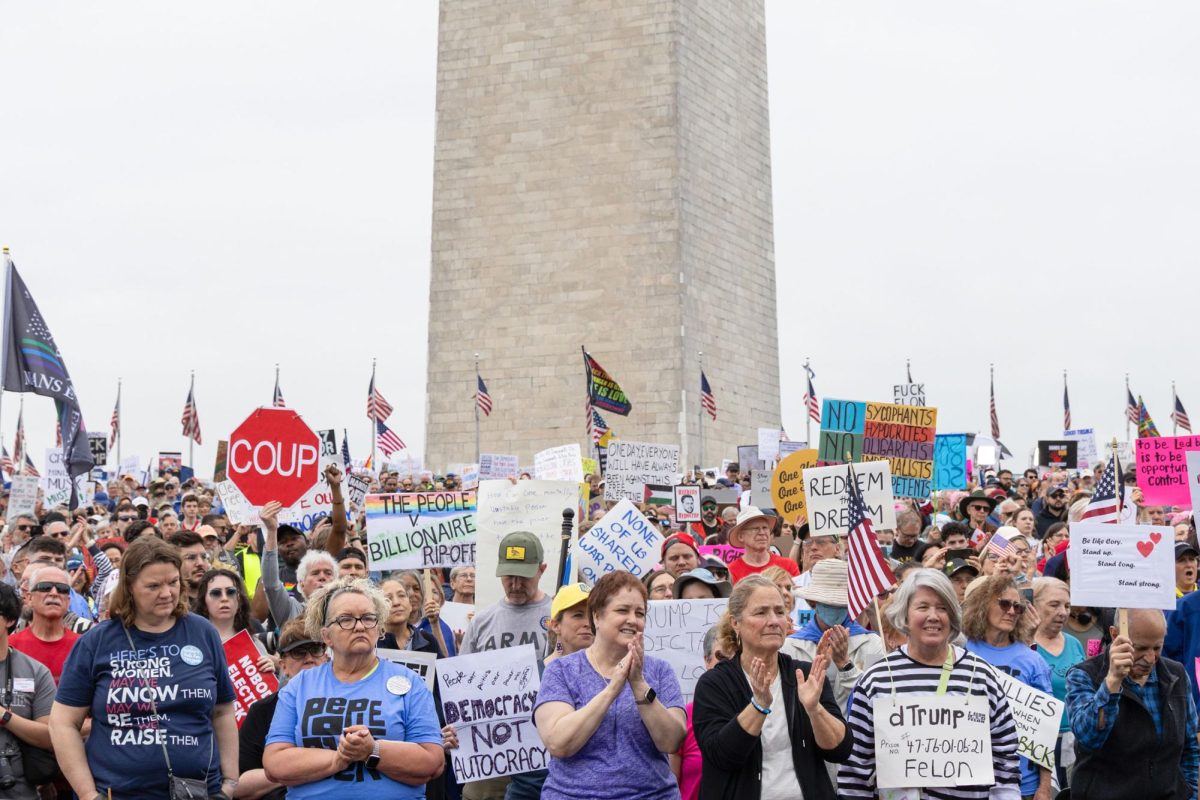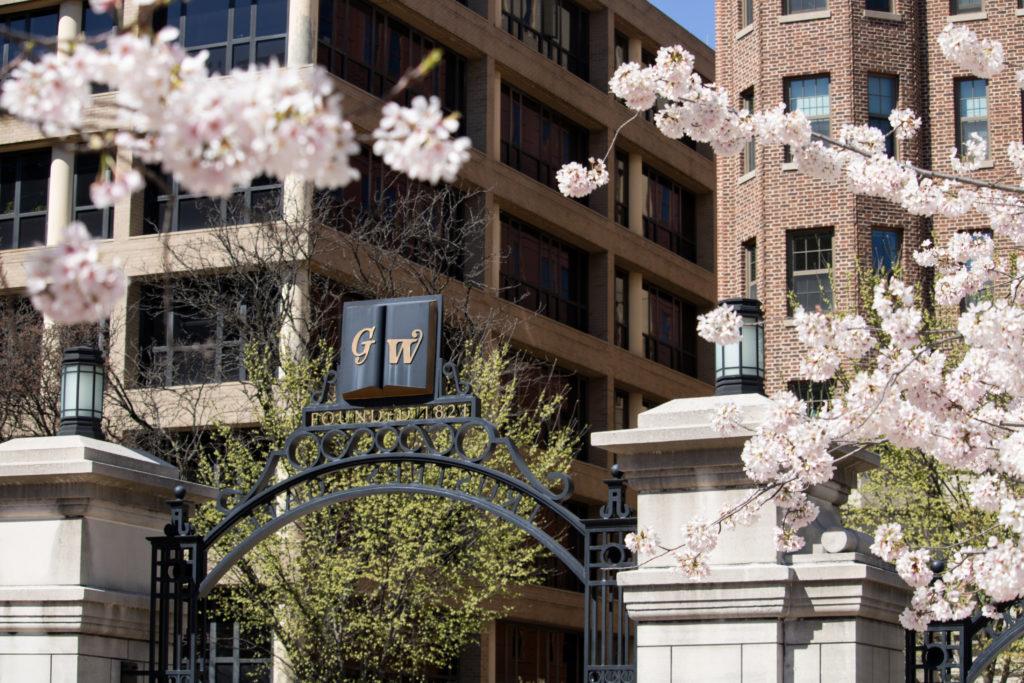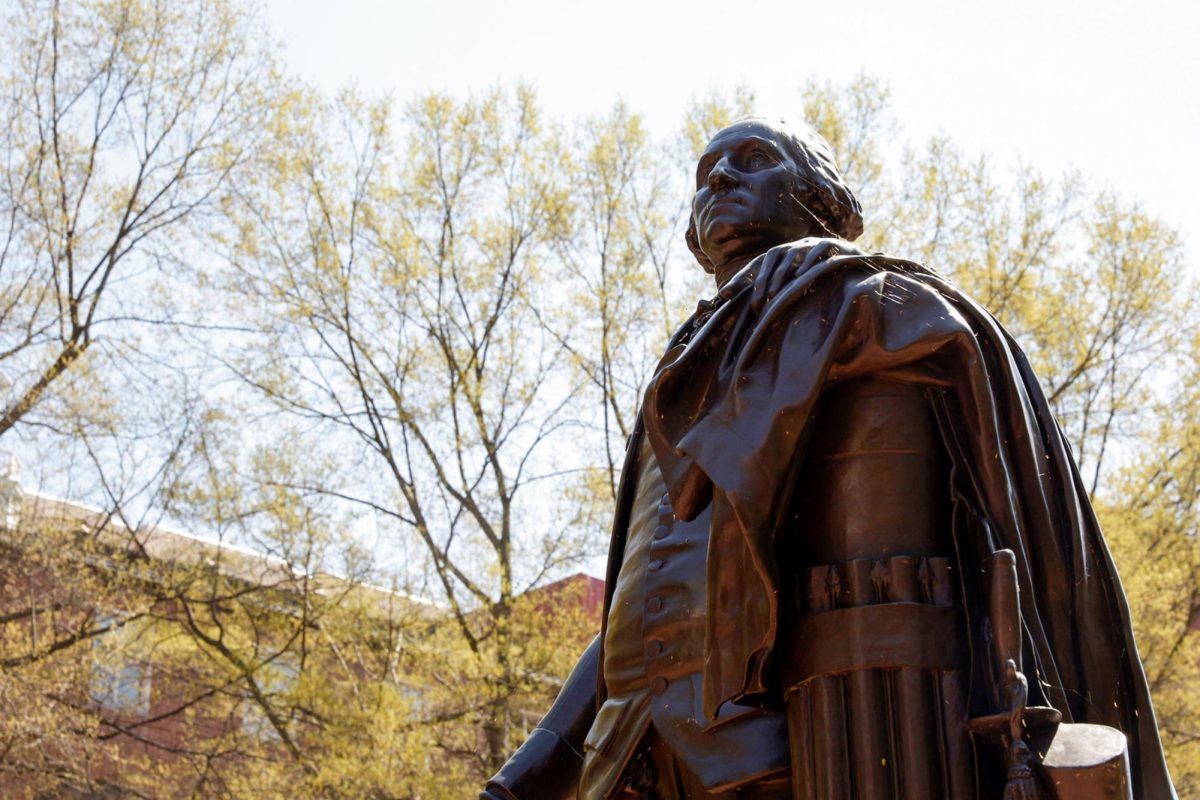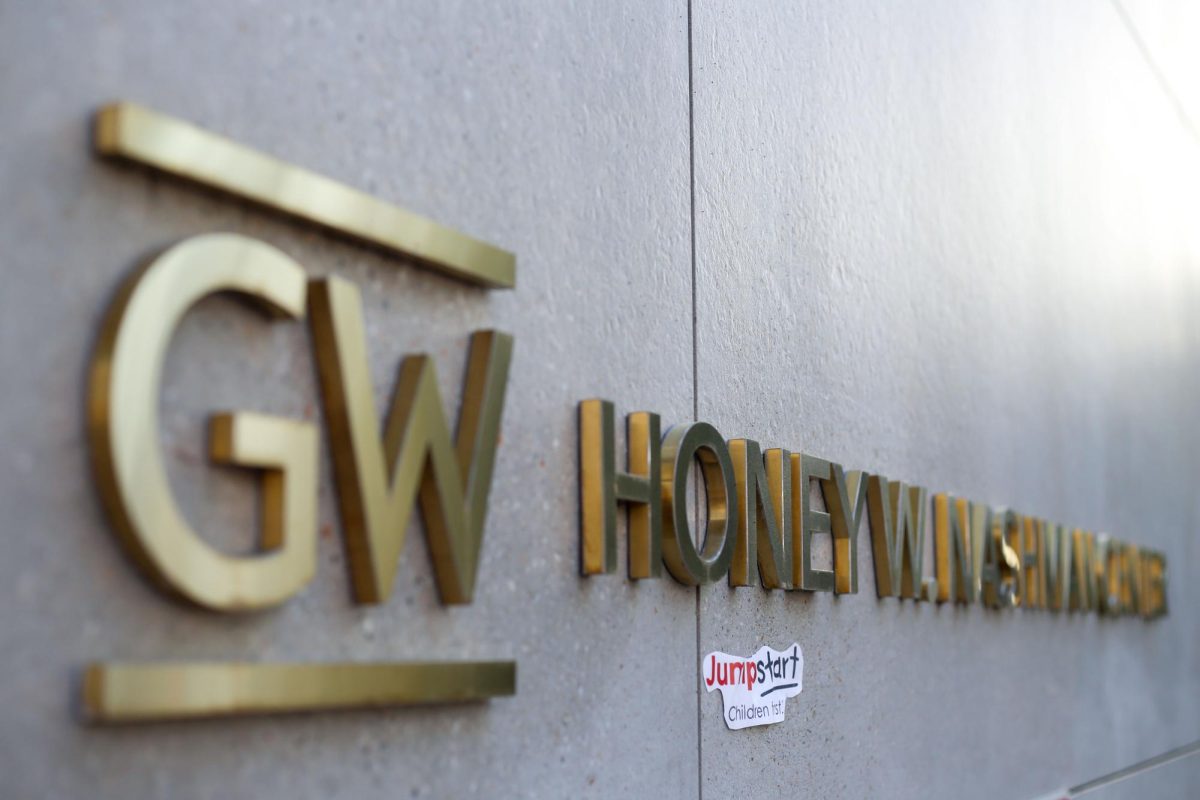Popped tires, broken bumpers and scattered hubcaps have become signs of a string of traffic crashes along Virginia Avenue this month after at least five vehicles have crashed at the same location.
Witnesses of the crashes said vehicles driving eastbound appear to be striking the center median of the 2400 block of Virginia Avenue avenue next to Columbia Plaza Apartments and Shenkman Hall. The center median bisects the street into two diverging lanes, one connecting to 23rd Street and the other continuing along Virginia Avenue with a tunnel.
Rita Champagne, a retired State Department employee and longtime Columbia Plaza Apartments resident, said she has seen more than 100 car crashes at that lane separation from her apartment since she moved there in 1976.
“Every time I hear a bang out here, I know what’s happening,” Champagne said.
She said the city once installed reflectors on the median, but they were destroyed one month later following a car collision, never to be replaced. She said working to alert city officials of the problem is “wasting your time” because they have never followed up on her traffic safety concerns.
Champagne said she has tried to prevent the crashes throughout her time living in the apartment, painting the median and placing cones, which has amounted to little success in preventing the crashes. She said she cleans up debris that’s often left behind from crashes because of the lack of a city response.
“You would think that when the police were there, they could pick up the trash,” Champagne said.
The Metropolitan Police Department declined a request for comment about the incidents at that location.
She said while the crashes happen year-round and often late at night, snow covering the median during winter months makes the median especially difficult to notice while driving.
Champagne said she “feels bad” for the drivers whose cars get damaged running over the median, and while she doesn’t own a car, she would like to make safety modifications to the median on her own accord to help prevent these crashes from continuing to happen.
“If I can help save people’s cars a little bit, I would be glad to try and do that,” she said.
Zhengtian Xu, an assistant professor of civil and environmental engineering at GW, said Virginia Avenue’s traffic hazard could be solved if the city installed reflectors and signs on the median or painted the road to indicate a median was up ahead. City officials haven’t placed any signage or reflective material on the barrier.
“This is not difficult at all,” Xu said. “You make the painting more visible and install some signs so it does not involve the restructure of the geometries of those lanes and roads.”
Xu said city officials will often prioritize fixing the areas that cause the most accidents or fatalities, and because most of Virginia Avenue’s crashes aren’t severe – resulting in mostly vehicle damage rather than pedestrian or driver injuries – the avenue hasn’t been receiving attention from the city.
There have been no accidents with injuries recorded on the block of Virginia Avenue between the beginning of the year to present, according to the Vision Zero Fatal and Injury Crashes Dashboard.
Mayor Muriel Bowser and the District Department of Transportation launched the Vision Zero Initiative in 2015 to eliminate serious traffic injuries and fatalities in the city by 2024 with safer streets and sidewalks and dangerous driving prevention.
DDOT, which oversees the Vision Zero Initiative, did not return a request for comment.
Traffic fatalities have increased since 2012 with 40 recorded in 2021 – the highest number since 2008. Statistics like these prompted the District Auditor to begin a 10-month investigation into Vision Zero’s lack of success in September 2021.
Sophomore Maddie Billet said she has witnessed at least 10 car accidents by the traffic median in the last semester from her room in Shenkman Hall, which overlooks Virginia Avenue.
Billet said in most accidents she saw, cars hit the median and most drivers pulled over to assess the damage to their vehicle – usually flat tires or broken bumpers and hubcaps – before driving away if they were able. In three of the crashes she saw this semester, Billet said the drivers could not drive away without the assistance of emergency services.
She said she helped an elderly woman call 911 late last month after she heard a loud bang outside her dorm and saw the woman’s car totaled on the side of the avenue.
“That’s where she had to call a tow truck,” Billet said. “She was pretty shaken up so I called 911 because I didn’t know if anyone else had.”
Billet said she filed a road repair report with the city after the accident late last month in hopes that officials would fix the “confusing” lane split with additional signage or reflective material on the median. She said city officials promised to resolve the problem, but they painted a five-foot white line on the street outlining the median last week instead of installing signage or reflectors.
Ria Gupta, a sophomore who also lives in Shenkman Hall, said she saw five crashes on Virginia Ave last week from her 10th-floor room.
“It’s usually at 2 in the morning,” Gupta said. “But when we hear a loud screech, we usually get up and look, and it’s a car that hit the divider or being very loud.”
Gupta said the city should extend the painted divider markings farther down the road because they increase the median’s visibility from a distance.
“I’m from New Jersey, so all the dividers I see usually have a line, a drawing around them and the shape of a triangle that goes out a lot further,” she said. “So you can see from a lot earlier that a divider is coming up.”
Gupta said during some of the crashes she’s witnessed, vehicles’ airbags were deployed and some cars “ricocheted” backwards after hitting the median, while others were straddled on top of the divider and left stuck, unable to reverse. Gupta said no one has gotten hurt from the accidents she’s seen so far.
“It takes a while for the ambulance to come, like 15 to 20 minutes later,” she said. “We would fall back asleep after the crash, and then get woken up again by the sound of the fire trucks and the ambulance and police cars.”
Grace Chinowsky contributed reporting.






